Purpose Incorporated: A primer for brands in APAC
This article is part of a special series on how brands in APAC can go beyond profit to do good and do better for themselves and others. Read more.
Non-WARC subscribers can read this series in its entirety by accessing the articles via the landing page.
Why it matters
Doing good by humanity is a growth philosophy, not philanthropy, and brands must ensure their business offer serves humanity before they consider any marketing and communications efforts, which should champion and appeal to all of humanity.
Takeaways
- For their business offer to add genuine value to customers and society, brands have to deliver an unmet human need for marginalised groups and consider the circularity of impact.
- For marketing and communications functions to meaningfully contribute to purpose, DEI and social impact activities, brands need to find the common human truths that can make a brand meaningful to all of humanity.
- To ensure brands don’t do more harm than good, they should not communicate values that their business cannot back up, nor “culturally appropriate” versus “culturally appreciate”.
This piece is a continuation of the Chapter 1 article where we spoke about what rehumanising leadership means, why it’s vital for our survival, the steps required plus the necessary principles and frameworks.
We also discussed five practical application areas for these frameworks to rehumanise leadership and covered two areas in Chapter 1:
- Area #1 – Strategic planning and goal setting
- Area #2 – Internal ecology (people, systems, policies and culture)
In Chapter 2, we cover these two areas:
- Area #3 – Business offer
- Area #4 – Marketing and communications
Because doing good by humanity is a growth philosophy, not philanthropy. As such, brands need to ensure their business offer serves humanity before considering any marketing and communications efforts, which when they are, should champion and appeal to all of humanity.
Area #3 – Business offer
There are four things brands can do to ensure their offer adds genuine value to customers and society whilst simultaneously growing their business with profitable solutions that meaningfully solve problems, not create them, for people and planet.
1. Deliver an unmet human need for marginalised groups
For example, Unilever Degree was the result of a collaboration and co-creation with the disability community to develop a world first inclusive deodorant design.
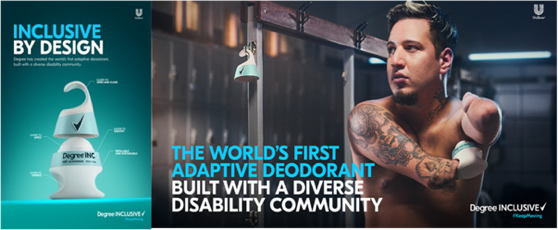
And even the most traditional of products, such as the kimono, can be made more inclusive. Japanese kimono brand Yukata redesigned the traditional kimono to include snap lock buttons and latches so people with disabilities could dress themselves more easily.

2. Consider the circularity of your total business impact
Unrestrained capitalism has resulted in irresponsible and unethical business practices that prioritised profit over people and planet. Businesses need to start taking responsibility for their impact in every arena by being cognisant of their interconnectedness and impact with their staff, partners, suppliers, communities, society and the planet. Examples of brands doing this are:
Patagonia offers a free repair service to encourage people to reuse rather than buy new Patagonia products unnecessarily, especially on sale days. H&M and Uniqlo also have a recycling program that makes new clothes from old apparel.

IKEA buys back unwanted furniture and resells them as second-hand items in 27 countries to ensure they are manufacturing responsibly and sustainably.


Garnier Indonesia created a one-minute film “One Green Step” to show how quickly the planet is degenerating and the urgency to act on climate change. They also created collection points for plastic bottles where Garnier would double the donations to fund education programs and resources for the child labourers who pick and sort the waste and are integral to the waste management process, yet often overlooked by society.


Australian wax tipped Ecobananas, pioneers of a world first regenerative farming system, created a subsidiary business called Taste Before Waste that donates “seconds” bananas – rejected by retailers for aesthetic reasons only – to homeless shelters across Queensland. They also sell and home deliver them at a discount to customers to ensure there is no unnecessary wastage in their supply chain. This prevents unnecessary methane entering the atmosphere from food rotting in landfills, which is 25 times more potent than CO2.

3. Credibly champion positive social change
By identifying a credible brand link to a social issue, brands can leverage their platforms and enormous reach to spread positive social change messages, whilst driving awareness and consideration for their products or services.
For example, skincare brand Proya China collaborated with China Women’s Daily to launch a provocative campaign on International Women’s Day that challenged gender stereotypes, even criticising the Chinese government for trying to entrench harmful social norms around masculinity.
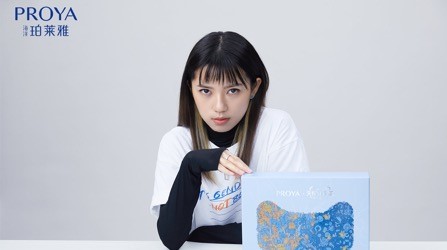
As part of “The Power of Makeup” platform, the Shiseido “Party Bus” online film featuring a same sex couple’s romantic encounter encourages the boundaries of imagination to be stretched and to inspire people to turn exploration into self-expression.

Just before the first anniversary of India revoking the 158-year-old colonial law that criminalised LGBTQ rights, the Times of India launched a campaign to support LGBTQ Indians by using its classifieds section as a place to celebrate stories of connection, acceptance and “coming out” with pride.
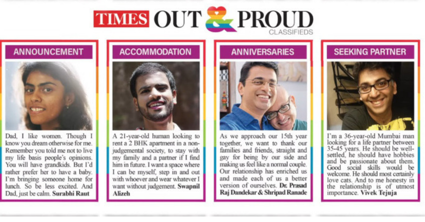
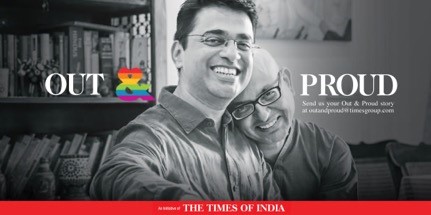
Lego’s “Everyone is Awesome” is the first LGBTQ+ Lego set which is essentially a cultural artefact that promotes gender equality, empathy, love, inclusion and belonging with the next generation.
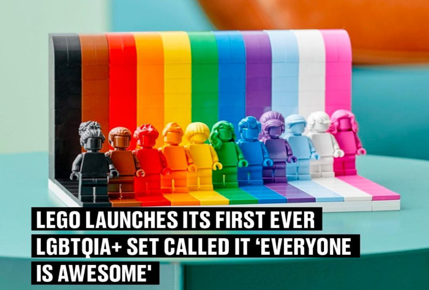
In response to Black Lives Matter, Barbie, a brand icon for children for decades and the epitome of whiteness, created a content piece discussing white privilege with her black friend Nikki, thus enabling parents and children to have meaningful conversations about racism and its impact.

Ben and Jerry's used the names of their ice-cream flavours as an omnipresent protest against issues such as the prison system in America, fascist political leaders and climate change.
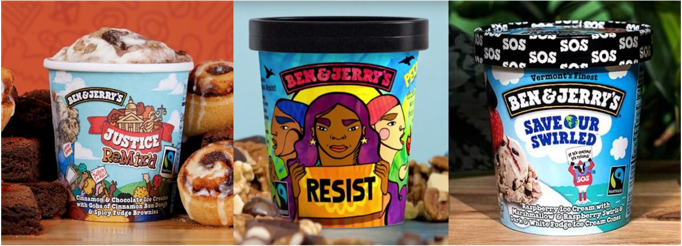
But these are only the latest iterations.
In 2015, washing detergent brand Ariel created “Share the Load” in India, profoundly shifting the societal view of the gender imbalance of housework done between females and males.
Two million men pledged to share the load and it became imbued into culture and society with the world’s first icon for household gender equality, sewn into clothing tags and the learnings incorporated into the national education system syllabus and social calendars. It won the first Cannes Glass Lions for Change and continues in new iterations today, even with a lockdown message.

In 2014, in response to Typhoon Haiyan leaving 3.9 million survivors of Tacloban City, Philippines without electricity, BBDO Guerrero, Pepsi, UN Development Plan and My Shelter collaborated on an initiative called “Litre of Light”. They converted old single-use plastic bottles by adding a solar panel, battery and LED light that could store 10 hours of light. They also taught residents how to create and maintain the light, empowering them to become solar engineers with minimal knowledge and access to materials. It created new jobs and became a global movement in the first 20 months, being installed in over 150,000 homes in the Philippines (one million homes by 2017) and has been rolled out in 15 countries such as Pakistan, Egypt, India and Latin America.

“When you lean into finding where you can give more to serve others, you naturally find creative ways to meaningfully contribute to society,” said David Guerrero, chairman and chief creative officer, BBDO Guerrero Philippines, the creator of Pantene’s “Don’t let labels hold you back” and Pepsi’s “Litre of Light”.
4. Let go of things that don’t serve humanity
As society evolves, so does what is acceptable as we learn what is harmful, hurtful and irresponsible.
For this reason, Disney now issues warning on their classic cartoons such as “Jungle Book” to acknowledge racist stereotypes. It’s also why we no longer allow smoking on airplanes. The same goes with products and services.
For example, in response to Black Lives Matter, Neutrogena discontinued a very profitable whitening product line called “Fair and Lovely” in acknowledgement of the ongoing impact of colourism prevalent in many Asian communities and how it contributes to marginalisation and discrimination.
Whilst the move was celebrated in India and Southeast Asia, it was met with indifference in China, Japan and South Korea, meaning you must be comfortable standing by your values regardless.
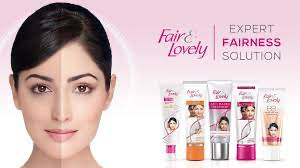
Area #4 – Marketing and communications
For marketing and communications functions to meaningfully contribute to purpose, DEI and social impact activities, brands need to find:
- The common human truth(s) that can make a brand meaningful to all of humanity
- A credible role the brand can play within the solution to contribute to people and planet
- How to market and communicate in a way that resonates with humanity
Below are five actionable insights to further rehumanise the approach:
1. Find the universal human insight
Our intersectional identities are what make the infinite unique expressions of humanity so wonderful. But to date, we often adopt the dominant culture’s standards and aperture. However, at the end of the day, we all have the same needs and all our decisions are fundamentally guided by how something makes us feel.
By mining universal human insight, messages can transcend our differences – demographic, geographic and cultural – to unite us as humans.
“If you go to the ocean floor of your soul, you will find something that connects us all,” said Josy Paul, chairman and chief creative officer of BBDO India, the creator of Ariel’s “Share the Load”.
Some examples are:
In 2012, one of the world’s first campaigns to tackle social issues, “Don’t let labels hold you back” by Pantene Philippines, highlighted the double standard for men and women. It sparked a global debate because of its universal resonance and inspired the inception for Cannes Glass Lions for Change, championed by Sheryl Sandberg.

In 2017, as part of its #TouchOfCare platform, Vicks India’s “Generations of Care” demonstrated how the power of a mother’s touch and love – through the story of a single, transgender mother and her adopted, orphan daughter – is universally relatable despite its unique context.

2. Take a back seat
Integrity is about being more committed to the impact and the outcomes you want to have for others, more than being known for the outputs and your role within it.
“Your brand is not the most important thing. It's about using the power of your brand to help the right people, make the right change,” said Sean Farrell, head of retail at Ben & Jerry’s ANZ.
In 2020, in an unbranded collaboration with 15-year-old TikTok social influencer Charlie D’Amelio, who had 43 million followers, P&G encouraged social distancing from the outset of COVID-19 and agreed to donate money for the first three million dances to Feeding America and Marcus25. Within one week, the video had already received 187.3 million views.

3. Challenge harmful stereotypes and champion authentic representation
To avoid being tokenistic and perpetuating harmful stereotypes, ensure authentic representation in storytelling. The diversity of humanity must be represented in your brand, advertising, media and production teams or at least be contributing to solutions throughout any development processes. Examples of brands that have challenged stereotypes and the status quo well are:
Indonesian fashion brand Zoya uses its platform to challenge stereotypes and advocate that Muslim women can be more than caretakers, wives and mothers.

Grab, a transport brand in Indonesia, created a campaign to support its deaf drivers by destigmatising what deaf people are capable of.

Some examples of brands that have championed authentic representation by collaborating with experts and communities with lived experience to challenge traditional stereotypes and highlight cultural nuances are:
As part of its “Made from More” platform, Guinness’ “Liberty Fields” featured a unique perspective of Japan’s first all-female rugby team.

To launch Google Pixel, Google collaborated with Childish Gambino and multicultural marketing advertising agency Cashmere to ensure the AI replicated the way Donald Glover danced and that the nuances and uniqueness of black culture, the most influential in the world, was represented authentically and in an inspirational way.

“You need to get the right mixology of people in the room
so you can be additive to culture, not exploit it,” said Dhane Scotti, global consumer marketing lead for Google Pixel and Nest.
4. Make diversity inspirational, not a badge of honour
Make people feel included by helping them see themselves or their communities in a positive light – not by talking about your brand values but embodying them. Focus on how to cultivate feelings of inclusion such as belonging, acceptance and solidarity.
Some examples are Target and Vogue. Even children's books play an important role in ensuring inclusion starts from childhood.

By highlighting three diverse stories of non-traditional couples, Unilever Philippines’ “Close Up” #MakeYourMove campaign encourages us to dismantle the common barriers that can prevent us from getting closer, such as fear of judgement, discrimination and self-doubt about our worthiness.

5. Share learnings with your industry for change at scale
When Volvo discovered that women suffered more injuries in car accidents because crash test dummies were modelled on men, it shared all its data and learnings with the entire car industry to ensure women were safe, no matter what car they bought through The EVA Initiative.

Due to rapid urbanisation, lack of recycling initiatives and underdeveloped sanitation systems in Vietnam, PRO Vietnam was formed as a coalition of companies including Nestle, Coca-Cola and Tetrapack. Together, they are proactively creating waste management systems to build a circular economic model through more accessible and sustainable packaging collection and recycling processes to prevent further environmental degradation.

There are also five key traps to avoid to ensure brands don’t do more harm than good.
- Don't communicate values that your business can't back up: Prioritising conspicuous progress for a short-term win will result in long-term damage.
- Don't use DEI like a flavour topping for special occasions: DEI is not a tactic; it is what you value and therefore a way of being and behaving.
- Don't assume white, cisgender, able-bodied, neurotypical standards as the default: Colonialism has imposed invisible standards we assume to be “normal”. They’re not.
- Don't “culturally appropriate” versus “culturally appreciate”: Using aspects from a culture as an aesthetic for profit is disrespectful and unethical.
- Don't make your brand the hero or saviour: It’s like photographing yourself handing money to a homeless person. Don’t do it.
Conclusion
Whilst a company’s business offer and marketing and communications are integral components of how it can positively contribute to purpose, DEI and social impact initiatives, for systemic, meaningful change and holistic impact, businesses need to look at the entire ecosystem in which they operate if they truly want to leave the world better than they found it.
In Chapter 3, we will cover this more in Area #5 – Partnerships and ecosystems.

